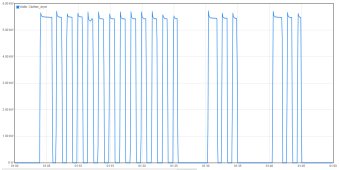FilterGuy
Solar Engineering Consultant - EG4 and Consumers
There has been a lot of discussion about ‘Zero Export’ on the 18Kpv and I would like to summarize what is going on.
General Points:
The 18KPV-specific information.
General Points:
- The term ‘Zero Export’ is used throughout the industry to talk about preventing power from being exported to the grid. The reality is that Zero Export is a bit of a misnomer because no hybrid inverter currently available can achieve true zero export. All of the hybrid inverters I have data on have a margin of error. Generally speaking, Hybrid inverters can get it down to 100W or less. However, if there is a load on the output, this will go away.
Practically all households have a constant background load of over 200W so they will never see a sustained export. (It is possible that there may be momentary exports when a very large load shuts off and the inverter races to adjust)
- Exporting power is only an issue when the inverter is installed in a situation where the Utility does not allow export. In all other cases, the amount of export is negligible and makes no real difference in the performance of the system.
The primary reason a utility does not allow export is that their systems are not set up to handle the extra power. Consequently, if a utility notices an export they will likely do an inspection, and when they determine that it is a small export, many sign off on the installation anyway.
Note: The utilities also have safety concerns but those are covered by UL listings for Grid Interactive inverters and are somewhat separate from the Zero Export issue.
The 18KPV-specific information.
- The 18KPV can see as high as 100W export in the no-load scenario and the EG4 engineers tell me they are working on reducing it
- EG4 reports that after deploying over 500 systems, there are no reports of a Utility flagging an export issue on the 18Kpv.
- The EG4 engineers tell me they are working on a firmware update that has a setting to turn the inverter into an off-grid inverter when loads are under 1000w, and reconnect as grid assist is needed. When in this mode, the inverter never powers from the inverter and the grid at the same time while at that low of a wattage.
(I do not have further information on the characteristics of the transition from on-grid to off-grid and back.)




